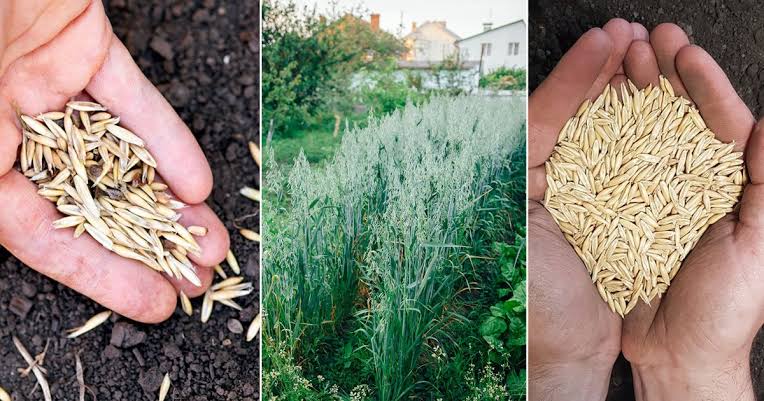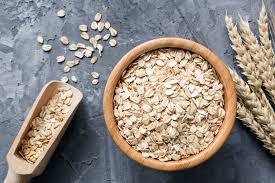Oats are a type of grain that many people enjoy eating. These little grains are not only tasty but also packed with nutrients that are good for your body. Oats come from oat plants, and they have been a part of human diets for a long time.
One of the great things about oats is that they are a fantastic source of energy. When you eat oats, your body gets a boost of carbohydrates, which are like fuel for your muscles and brain. This is why a bowl of oatmeal in the morning can be a great way to start your day – it gives you the energy you need to tackle whatever comes your way.
Besides being a good source of energy, oats are also rich in fiber. Fiber is like a friendly helper for your digestive system. It helps keep things moving smoothly and can even lower the levels of cholesterol in your blood. So, eating oats can be a smart choice if you want to keep your heart healthy and your stomach happy.
What’s fascinating about oats is that they contain a special kind of fiber called beta-glucans. These beta-glucans have been shown to have some really cool health benefits. They can help regulate blood sugar levels, which is especially important for people with diabetes. So, oats aren’t just delicious – they can also be a smart choice for those looking to manage their blood sugar.
If you’re someone who likes to keep an eye on their weight, oats can be a great ally. Since they are high in fiber, they can help you feel full and satisfied for a longer time. This means you might be less likely to snack on unhealthy foods between meals. Oats are like a friendly companion on your journey to maintaining a healthy weight.
Oats aren’t just limited to breakfast options. You can find oats in various forms, like oat flour, oat bran, and even oat milk. This versatility makes oats a wonderful ingredient in a variety of recipes, from cookies and muffins to savory dishes like oat-crusted chicken. It’s amazing how these humble grains can add a nutritious touch to so many different meals.
Let’s not forget the convenience of oats. Instant oatmeal, for example, can be prepared in a matter of minutes, making it a quick and easy choice for busy mornings. Whether you’re a student rushing to class or a parent getting ready for work, oats can be a lifesaver when time is short but health is a priority.
In addition, oats are not just a simple grain; they are a powerhouse of nutrition. From providing energy to supporting digestive health, managing blood sugar levels to aiding weight management, oats have a lot to offer. So, the next time you reach for a bowl of oatmeal or incorporate oats into your recipes, know that you’re not just enjoying a delicious meal – you’re treating your body to a host of health benefits.
Read Also: Pig Housing Design and Requirements
How to Grow and Care for Oats

Growing and caring for oats is a rewarding experience that can lead to a bountiful harvest. Here’s a simple guide to help you nurture your oats from seed to grain:
1. Planting: Begin by selecting a suitable location for your oats. They prefer well-drained soil with a slightly acidic to neutral pH. Oats thrive in cool climates, so consider planting them in early spring or late summer. Scatter the seeds evenly over the prepared soil, and lightly rake to cover them.
2. Watering: Oats need consistent moisture for optimal growth. Water the plants regularly, especially during dry periods. However, avoid waterlogged conditions, as oats prefer well-drained soil. Adequate hydration is crucial during the flowering and grain-filling stages.
3. Sunlight: Oats are sun-loving plants. Ensure they receive at least 6-8 hours of sunlight daily. A sunny location promotes robust growth and helps in the development of healthy oat grains.
4. Fertilizing: Before planting, enrich the soil with well-rotted compost or a balanced fertilizer. Oats generally don’t require excessive fertilization. If needed, provide a light application of a nitrogen-rich fertilizer during the growing season.
5. Weeding: Keep the oat bed free from weeds, as they can compete for nutrients and water. Regular weeding, especially in the early stages of growth, will contribute to healthier oat plants.
6. Disease and Pest Management: Oats are relatively hardy, but like any plant, they can be susceptible to diseases and pests. Keep an eye out for signs of rust or mildew. If detected, treat promptly with appropriate fungicides. Additionally, monitor for pests such as aphids and take preventive measures if necessary.
7. Harvesting: Oats are ready to harvest when the grains have turned a golden color and the stalks have started to dry. Use a sickle or scythe to cut the oat stalks just above ground level. Allow the harvested oats to dry in a well-ventilated area before threshing to separate the grains from the straw.
8. Threshing: Threshing is the process of separating the grains from the straw. You can achieve this by gently beating the dried oat stalks or using a flail. Once threshed, winnow the grains to remove any remaining chaff.
9. Storage: Store the harvested oats in a cool, dry place in airtight containers to prevent moisture and pests. Proper storage ensures that your oats remain fresh and nutritious for an extended period.
Following these simple steps can help you cultivate a successful oat crop. Whether you’re a seasoned gardener or a beginner, growing oats can be a fulfilling and worthwhile endeavor.
Uses of Oats

Oats have a wide range of uses beyond just being a delicious breakfast option. Here are some versatile ways oats can be incorporated into your daily life:
1. Breakfast Delight: Start your day with a warm bowl of oatmeal. Add your favorite toppings like fruits, nuts, or a drizzle of honey for a tasty and nutritious breakfast.
2. Baking Marvels: Use oat flour as a healthier alternative in baking. Oat-based cookies, muffins, and pancakes can be both delicious and wholesome.
3. Smooth Operator: Blend oats into your morning smoothie for added fiber and a hearty texture. It can make your smoothie more filling and nutritious.
4. Granola Goodness: Create your own homemade granola by combining oats with nuts, seeds, and dried fruits. It’s a crunchy and customizable topping for yogurt or a standalone snack.
5. Savory Treats: Try savory oat recipes, such as oat-crusted chicken or vegetable patties. Oats can add a unique texture and nutritional boost to various savory dishes.
6. Dairy-Free Milk: Make oat milk as a dairy-free alternative. Blend oats with water, strain, and use the liquid as a substitute for regular milk in coffee, tea, or cereal.
7. Energy Bars: Prepare energy bars by mixing oats with ingredients like nuts, dried fruits, and a binding agent. It’s a convenient and nutritious snack for on-the-go energy.
8. Thickening Agent: Use oats as a natural thickening agent in soups, stews, and gravies. It adds a heartiness to the dish while boosting its nutritional content.
9. Face Mask Base: Combine oats with yogurt or honey to create a soothing face mask. Oats can help cleanse and exfoliate the skin, leaving it feeling refreshed.
10. Gardening Aid: Oats can be used as a cover crop in gardening. They help suppress weeds, improve soil structure, and add organic matter when tilled back into the soil.
11. Crafty Crumbs: Crush oats and use them as a decorative topping for crafts or homemade candles. They can add texture and visual appeal to various DIY projects.
12. Pet-friendly Treats: Oats can be a wholesome ingredient in homemade pet treats. Check with your veterinarian for suitable recipes for your furry friends.
From the breakfast table to the garden, oats offer a plethora of uses that go beyond traditional consumption. Experimenting with oats in various forms can add both nutrition and creativity to your daily routine.
Read Also: Pig Production Systems (System of Pig Production)
Economic Benefits of Oats

Oats contribute significantly to the economy, offering various economic benefits across different sectors. Here are some key aspects of the economic benefits associated with oats:
1. Agricultural Sector: Oats are a valuable crop for farmers, providing a source of income through cultivation. They are often rotated with other crops, enhancing soil health and reducing the risk of pests and diseases. The cultivation of oats supports employment in the agricultural sector.
2. Global Trade: Oats are a globally traded commodity, contributing to international trade. Countries with favorable climates for oat cultivation can export oats to regions where they are not commonly grown, fostering economic exchanges and trade relationships.
3. Food Industry: The food industry benefits from oats as a versatile ingredient. Oat-based products, such as oatmeal, granola bars, and oat flour, contribute to the production of a variety of food items. This diversity supports economic growth within the food processing and manufacturing sectors.
4. Health and Wellness Market: The increasing awareness of the health benefits of oats has led to a growing market for oat-based products. This includes oat milk, oat-based snacks, and health foods, contributing to the expansion of the health and wellness industry.
5. Livestock Feed: Oats are used as feed for livestock, providing a nutritious and cost-effective option for farmers in the livestock industry. This usage helps reduce overall production costs for meat and dairy products.
6. Research and Innovation: Oats continue to be a subject of research and innovation, leading to the development of new varieties with improved traits, such as disease resistance and higher yields. This research not only benefits farmers but also supports agricultural technology and innovation.
7. Employment Opportunities: Oat cultivation, processing, and manufacturing create employment opportunities across the supply chain. From farmers and agricultural workers to food processing plant employees, the oats industry contributes to job creation.
8. Environmental Benefits: Oats are often used as a cover crop in sustainable agricultural practices. This not only benefits the environment by preventing soil erosion but also supports eco-friendly farming methods, which can be economically advantageous in the long term.
9. Diversification of Agriculture: The cultivation of oats allows for diversification in agriculture, providing farmers with an alternative crop that can be rotated with other staples. This diversification can contribute to increased resilience in the face of changing market conditions.
10. Nutrient-Rich Crop: Oats contribute to human and animal nutrition due to their high nutritional content. This indirectly reduces healthcare costs by promoting healthier diets and lifestyles.
In summary, oats play a crucial role in various economic sectors, from agriculture and trade to food processing and health. Their versatility and nutritional benefits make them a valuable asset in supporting economic growth and sustainability.
Read Also: The Art of Waste to Jewelry Business

